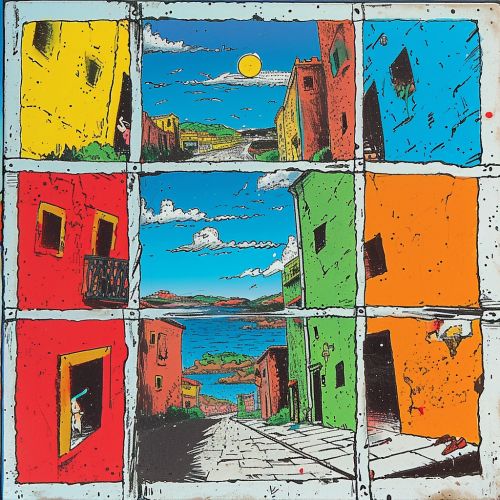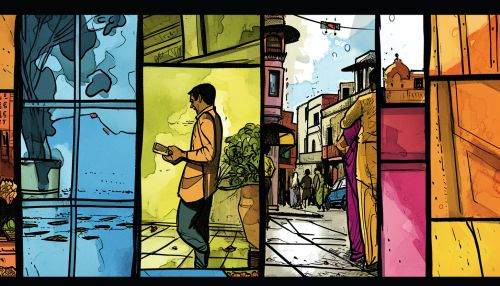Comic Strips
Introduction
Comic strips, also known as cartoon strips or comic books, are a form of visual storytelling that combines art and text. They originated in the late 19th century and have since become a significant part of popular culture worldwide. Comic strips are typically published in newspapers, magazines, and more recently, on the internet. They cover a wide range of genres, from humor and satire to adventure and drama, and often serve as a commentary on society, politics, and human nature.


History
The history of comic strips dates back to the late 19th century, with the publication of the first recognized comic strip, Richard F. Outcault's "The Yellow Kid" in the New York World newspaper in 1895. This was followed by the creation of other popular comic strips such as "Little Nemo in Slumberland" by Winsor McCay and "Mutt and Jeff" by Bud Fisher. These early comic strips laid the foundation for the medium, establishing conventions such as sequential panels, speech balloons, and recurring characters.
In the early 20th century, comic strips began to be syndicated, allowing them to reach a wider audience. Syndication companies such as King Features and United Media distributed comic strips to newspapers across the country, making them a staple of the Sunday funnies. During this period, comic strips such as "Popeye", "Blondie", and "Dick Tracy" gained widespread popularity.
The mid-20th century saw the rise of the comic book format, with the publication of titles such as "Superman" and "Batman" by DC Comics, and "Spider-Man" and "The Fantastic Four" by Marvel Comics. These comic books introduced the superhero genre, which has since become a dominant force in popular culture.
In recent years, comic strips have also found a home on the internet, with webcomics such as "xkcd", "The Oatmeal", and "Questionable Content" gaining a large following. Webcomics offer creators more freedom in terms of content and format, and allow for direct interaction with readers.
Structure and Format
Comic strips typically consist of a series of sequential panels that tell a story. Each panel contains illustrations and often includes text in the form of captions, speech balloons, or thought bubbles. The arrangement of panels and the flow of text and images within them create the narrative and pacing of the story.
The format of comic strips can vary greatly depending on the medium. Newspaper comic strips are usually short, consisting of three or four panels, and often end with a punchline. They are typically serialized, with each strip telling a standalone story while also contributing to a larger narrative.
Comic books, on the other hand, are longer and more complex, often telling multi-issue story arcs. They are typically bound in a magazine format and can range from a few dozen to several hundred pages in length.
Webcomics, being unconstrained by physical space, can take on a variety of formats, from traditional panel layouts to infinite canvas designs where the comic strip extends indefinitely in any direction.
Genres and Themes
Comic strips cover a wide range of genres and themes, reflecting the diverse interests of their creators and readers. Some of the most popular genres in comic strips include humor, adventure, superhero, science fiction, fantasy, and slice of life.
Humor is perhaps the most common genre in comic strips, with many newspaper comics such as "Peanuts", "Calvin and Hobbes", and "Garfield" focusing on comedic situations and characters. These strips often use humor to comment on everyday life and human nature.
Adventure and superhero comics, popularized by comic books from DC Comics and Marvel Comics, feature action-packed stories with heroic characters battling villains and saving the day. These comics often explore themes of power, responsibility, and morality.
Science fiction and fantasy comics transport readers to imaginative worlds and scenarios, from futuristic space operas to magical realms. These comics often use their fantastical settings to explore real-world issues and ideas.
Slice of life comics depict the everyday experiences of their characters, often with a focus on realism and emotional storytelling. These comics can cover a wide range of topics, from the mundane to the profound, and often resonate with readers due to their relatability.
Impact and Influence
Comic strips have had a significant impact on popular culture and society. They have introduced iconic characters and stories that have become ingrained in our collective consciousness, from Charlie Brown and Snoopy in "Peanuts" to Batman and Spider-Man in superhero comics.
Comic strips have also influenced other forms of media. Many comic strip characters have been adapted into animated TV shows, live-action films, and video games. The visual language of comic strips, with its emphasis on sequential art and visual storytelling, has also influenced the aesthetics and storytelling techniques of film, television, and graphic design.
In addition, comic strips have often served as a platform for social and political commentary. Creators have used the medium to satirize societal norms, critique political policies, and advocate for social change. This has led to comic strips being recognized as a legitimate form of art and literature, with some strips and books receiving critical acclaim and awards.
